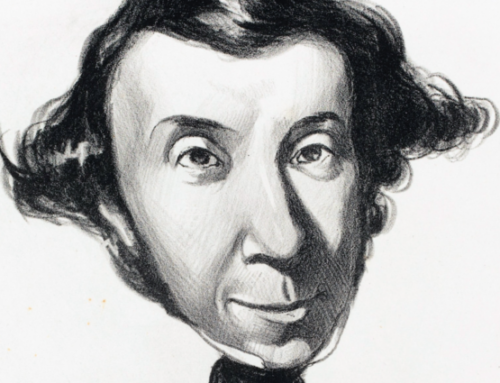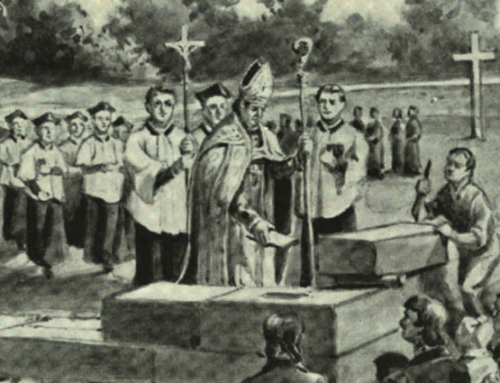Perhaps we should be grateful to John Williams and Howard Shore for showing us that we can still use the tonal language to create music that resonates in the hearts of ordinary people. Perhaps we should be suspicious of those musical censors who leap to dismiss whatever is spontaneously likeable as cliché, and whatever touches the ordinary heart as kitsch.
 There is a kind of listener who first becomes acquainted with the symphony orchestra through film music. And many such listeners want to hear the music again—willingly attending concerts devoted to scores whose original function was to compensate for absent dialogue, and which were heard in fragmented versions that faded in and out of the drama.
There is a kind of listener who first becomes acquainted with the symphony orchestra through film music. And many such listeners want to hear the music again—willingly attending concerts devoted to scores whose original function was to compensate for absent dialogue, and which were heard in fragmented versions that faded in and out of the drama.
So what is the status of film music among the musical arts, and how should it be judged? You often hear the expression film music used pejoratively. “It’s just film music,” said of some new symphonic piece, suggests an overblown pursuit of effect at the cost of structure, of atmosphere at the cost of musical form. But perhaps those who criticize music in that way are clinging to a parochial and outmoded conception of concert-hall listening. Maybe film music is the way forward for the tonal grammar and polyphonic architecture that are now so rarely heard in works by the musical avant-garde. Maybe film music is the only safe refuge for the ordinary musical ear, in a soundscape blasted by jagged orchestral explosions and wearisome post-modernist sound effects.
One thing is certain, which is that the most successful film music today exhibits a quite extraordinary level of competence. Melody, harmony, voice-leading and orchestration are all as good and professional as can be. John Williams’s Harry Potter scores and Howard Shore’s evocative music for The Lord of the Rings exhibit a mastery of harmonic sequences, polyphonic organisation and orchestral effect that would be the envy of many a composer for the concert hall. Some of the skills employed by such composers can be learned and there are schools devoted to teaching them. But there are also, in such composers as Williams and Shore, original effects, haunting passages of melody or quasi-melody, and a post-Mahlerian sense of just how much can be added without sacrificing polyphonic clarity—all of which are marks of a true musician.
At the same time, when favourite passages are extracted from their original context and presented in the concert hall, almost invariably it sounds to us as though something is missing. The melody that seemed so apt and touching on the screen sounds banal or even fake in the concert hall—witness the melodies given to Hedwig’s flight by Williams, so brilliantly orchestrated that you notice their emptiness only when your ears are turned fully upon them. It is when you hear this kind of music in the cold, lifted clear of the drama and presented as something complete in itself, that you begin to sympathise with those censorious advocates of the avant-garde who say, “No, you cannot compose like that.”
Such critics will tell us that tonal chord grammar, even if touched up here and there with Wagnerian chromaticism and the occasional Mahlerian dissonance, has, in Schoenberg’s words, “become banal.” It wasn’t always banal. But when used without the fresh melodic material and ingenuous musical narrative of the great masters it is no longer true art but pastiche.
It is not only in music, of course, that we hear this kind of criticism. The accusation of “pastiche” is used ad nauseam to block any attempt that architects might make to build in the traditional manner. But it has a special authority in music criticism, thanks to the polemics of Schoenberg and Adorno. Moreover, in the case of film music the charge often seems to stick. This stuff, however technically accomplished, seems so often to lack the core of sincere inspiration, the heartfelt and heart-stopping theme, and the inspired development that unfolds that theme’s potential.
Adorno, who was the first to launch a full scale assault on the block-buster scores of Hollywood, saw film music as the last degraded product of the vice instilled by Wagner: the vice of putting effect before cause. Film music, as he described it, used stock devices and ready-made sequences to add a musical halo to whatever was being presented on the screen. Its whole purpose was to add emotion where emotion is lacking, to puff up the empty drama with easily decipherable messages as to what the audience should at any moment be feeling. As Nietzsche put the point in his no-holds-barred assault on Wagner: espressivo at all costs.
But Adorno also saw film music in another way: as part of the capitalist assault on high culture. All the music, all the forms of entertainment by which he found himself surrounded in his exile in California, were the products of the capitalist culture industry—whose purpose it was, in Adorno’s eyes, to reduce art to a commodity, and to provide in the place of the free expression of critical consciousness the “fetishes” that conceal reality behind a veil of illusions. The musical fetish requires no hard work of aesthetic judgment, no painful exploration of the value and significance of our states of mind. It merely releases us into a warm bath of sentiment that, being unreal, costs nothing. As we respond to the kitschy climaxes on soaring violins, we congratulate ourselves that we are deeply moved. But, Adorno tells us, we are not moved at all, except by the image of ourselves being moved.
Those deep criticisms, expressed in an inspissated language that was Adorno’s most lasting contribution to the Marxist repertoire, do not carry weight with everyone. But they suggest, nevertheless, that the adjectives often used to dismiss or marginalise music for films—corny, sentimental, fake, kitsch, laid on with a trowel—are identifying a real and pervasive aesthetic fault. And the fault, you might think, comes from the attempt to herd people towards a crowd emotion, to neutralize our critical faculties, to say, “Come on, join in, let the tears flow.”
Or is this all just the snobbery of the avant-garde, a kind of musical elitism that belongs to an age from which we have recovered, now that our innocent distractions, once dismissed as “mass culture,” can be enjoyed for what they are, namely fun? Two observations are pertinent here. The first is that it is only some film music that conforms to the “blockbuster” style. It is only the epic narrative, with heroes, battles, the underlying war between good and evil, and (in the grown-up version) the rescue of desirable women by courageous men, that can call forth the full orchestral sound, usually amplified these days by wordless choirs. And here it is undeniable that there is a repertoire of clichés that film composers do not hesitate to use, and whose nature as cliché is far more apparent in the concert hall than in the course of some heroic battle between good (=good-looking) and evil (=ugly) on the screen. The wordless choir is one of them, chanting its ancestral calls to sacrifice over agitated strings and sustained chords on the brass, as the heroic soldiers of the good bravely hold their ground against the forces of evil, mounted on digital monsters that can be killed by nothing short of a power cut.
We should remember, therefore, all those films that have used small musical resources, not to compensate for the schematic nature of the plot, but in order to enhance an atmosphere that originates in the drama. Bernard Herrmann’s creepy modernist score for Hitchcock’s Psycho is a case in point. Hitchcock’s drama in no way depends on the music: but if there is to be music for such a gruesome tale, this is it—sparse, icy, setting the nerves on edge like a diamond-edged cutter going through steel. Or, to take a less extreme example, the gentle sadness of Erik Nordgren’s score for Bergman’s Wild Strawberries—a solo violin above a small chamber ensemble, never intrusive, but always picking up the threads of regret and loneliness as the old Professor’s life unravels, so as to unravel them a little bit more.
The second pertinent observation is that film scores seem not to survive for long outside the context created by the original screen-play. They inspire a following, of course. But it is a following that associates them with a particular film and a particular story. Of course, this is not always true. There are film scores that have survived because of their intrinsic musical virtues—Prokofiev’s Lieutenant Kijé, as well as his grand oratorio on the theme of Alexander Nevsky; Walton’s music for Henry V, and (a particularly telling example) the Sinfonia Antartica of Vaughan Williams. But these survive as free-standing musical works, composed according to principles that do not depend on the action that originally accompanied them.
Film music can be fruitfully compared to ballet. Most of the great ballet scores have been, by now, detached from their first choreographies. There are some, of course, that are indelibly associated with the original poetic idea—Swan Lake, The Firebird, Daphnis and Chloë—but many more have survived through manifold changes in the choreography and the libretto. The Rite of Spring is perhaps the most famous example. Stravinsky’s score is a triumph of rhythmic, melodic and harmonic order, which won its place in the hearts of musical people whether or not they had an interest in the ballet as an art form, or in the particular attempts, from Nijinsky onwards, to provide a way of dancing to this score.
Why are film scores and ballet scores so different in this respect? Why do ballet scores have such a long and vivid life in the concert hall, achieving a status—especially in the modern era—equal to the greatest of the purely orchestral compositions that changed the course of music? Here is a thought: while dancers dance to the music, the film score follows the action on the screen. In ballet it is the score that sets the pace, governs the action and in general controls the overall order and movement of the work. In film the score is subservient to the action, can survive only because it adds what the action leaves out, and then survives only as a kind of after image, the memory of something that has vanished over the horizon of perception.
Those thoughts do not, of course, justify the use of film music as a pejorative term. Perhaps we should be grateful to John Williams and Howard Shore for showing us that it can still be done—that we can still use the tonal language to create music that resonates in the hearts of ordinary people. Perhaps we should be more suspicious than we tend to be of those musical censors who leap to dismiss whatever is spontaneously likeable as cliché, and whatever touches the ordinary heart as kitsch. Nevertheless, we still need guidance: What is the path, between avant-garde censoriousness and musical cliché, and how can a serious composer follow that path, without some listener in the concert hall turning to his neighbour and whispering, “Film music?”
Republished with gracious permission of the Future Symphony Institute.
This essay was first published here in October 2015, and appears here again in memory of the great Sir Roger Scruton (born February 27, 1944), who died on January 12, 2020.
The Imaginative Conservative applies the principle of appreciation to the discussion of culture and politics—we approach dialogue with magnanimity rather than with mere civility. Will you help us remain a refreshing oasis in the increasingly contentious arena of modern discourse? Please consider donating now.
The featured image is courtesy of Pixabay.







It has been suggested — to which you allude — Wagner’s most horrific crime was the popularization of leitmotif. Which Hollywood has bought into so deep they are unaware of its source. When Character X is about to appear, his/her theme begins. When action Y is happening, an appropriate melody wafts across from the speakers. Which effort, like the “laugh track” on TV sitcoms removes the necessity of thought, and allows mere animal reaction.
Some “film music” is very good, and deserves applause. Other stuff should never have been composed. What I have found amusing is the influence of Jones, DePatie, and Freling in their appropriation of classical music for cartoons like Bugs Bunny (especially, but not solely, taking from The Barber of Seville and Siegfried). In the absence of good music when growing up, I noted those interesting accompaniments, and when in high school, began to search them out.
Most subversive, those cartoonists.